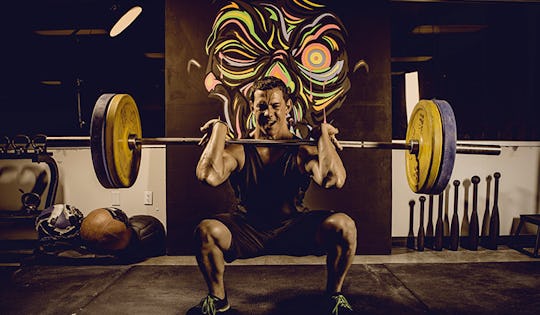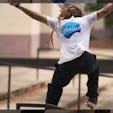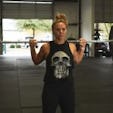The squat is universally regarded as the king of all exercises for decades. Powerlifters, Team Sports, Olympic Lifters, Crossfit, Core Performance, Bodybuilders….the list goes on, and on. All of the aforementioned competitors have entirely different focuses within their given sport, yet they all perform some variation of the squat.
Whether you are trying to perform at the highest level competitively or simply want to achieve the body of your dreams, you gotta squat. Having said that, most of those who perform the squat are performing it completely wrong. Rounding the lower back in the hole, not going below parallel, knees caving in, chest falling forward, all of these are biomechanical problems seen all to often in the gym. Here are 5 key points to remember for performing a perfect squat.
Squat Tip #1: Chest Up Shoulders Back
Keep your chest up and your shoulders back. Your body should stay in this position the entire time. You don’t want your shoulders to round forward, but you also don’t want to hyper extend your back either. Keeping your spine in a neutral position the entire time is the way to go. Many coaches will tell their lifters to look up, as that is the direction in which you want to move, but this is actually the last thing you want to do.
Squat Tip #2: Sit Back
Begin the movement by bending at the knees, which should track in a line close to the border of the first and the second toe. You want to achieve a full-range of motion, which puts emphasis on maximum knee flexion. If you have concerns as to whether you have the structural balance for this lift, consider hiring a qualified coach in your area to evaluate you.
Squat Tip #3: Don’t Let Your Knees Buckle
While at the bottom of the squat, as well as on your way up back to the full lock out position or extension of your hips, you should drive your knees outwards. Do not let them buckle because this can cause major strain on the tendons and ligaments in your knees.
If this is a consistent issue during your training, you should lower the training load, learn to squat right and focus on letting your knees track straight over the shoes, all the way forward! No buckling in, and no pushing out. That’s just as bad (pushing the knees outwards).
Squat Tip #4 Squat Equal to or Below Parallel
Maximum depth for the squat occurs when the hamstrings fully cover the calves. The degree of hip flexion necessary to reach proper depth is very individual, and relies on the flexibility of the entire lower body. The less hip flexion necessary, the better. Every Inch forward that your knee bends, you increase the sheer force at the area of L4-L5 lumbar vertebrae by an average of 50 lbs.
This figure obviously increases exponentially as your ability to move more weight improves. Although there are useful derivations of the squat that train the spinal erectors more intensely, the goal of the basic squat is to maintain an ideal, neutral, posture.
![Onnit Tplus]() Squat Tip # 5: Accelerate Out of the Hole
Squat Tip # 5: Accelerate Out of the Hole
At the bottom of the lift, begin in a controlled exhalation. The upward concentric phase is essentially a simple motion in which you stand up, so that you end up where you started. The ability to stand up fluidly with the right movement pattern is a function of overall structural balance. Drive with the legs and squeeze the glutes during the concentric phase. Keep your chest held high and look straight ahead. Do not look upward at the ceiling or excessively cock the neck.
Keep the elbows directly under the bar. Many trainees new to squatting allow their elbows to drift backwards. Doing so makes it more difficult to keep the chest and head in proper alignment, which leads to undue stress on the spinal erectors. Push upwards slightly on the bar with the hands. Although pressing upward does not actually lift the barbell, it allows you to engage the spinal erectors to a greater degree, which helps you to maintain an upright posture and a neutral spine.
Avoid performing a back extension during the upward concentric phase of the squat. Extending the back is an indication of technical failure and means structural imbalances or lack of flexibility are hindering your ability to correctly perform a back squat. Remember, the prime movers of this exercise are the quadriceps, not the spinal erectors, keeping the back stabilized.
Fix Your Squat Warmup:
The following warm up is a warm up I use with all of my clients before they engage in a heavy squat workout, or any lower body based workout for that matter. This warmup will help you practice proper squat form, while opening up the hips.
A1: Wall Squat – 3 rounds x 5 reps
A2: Air Squat with 1 second pause in the hole – 3 rounds x 10 reps
A3: Goblet Squat with 1 second pause in the hole – 3 reps x 5 reps
A4: Walking Lunge – 3 rounds x 10 reps (each leg)
A5: Bulgarian Split Squat with 1 second pause in the hole – 3 rounds x 5 reps (each leg)


)





